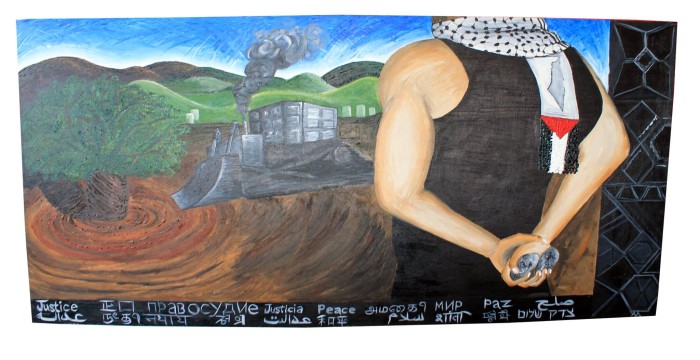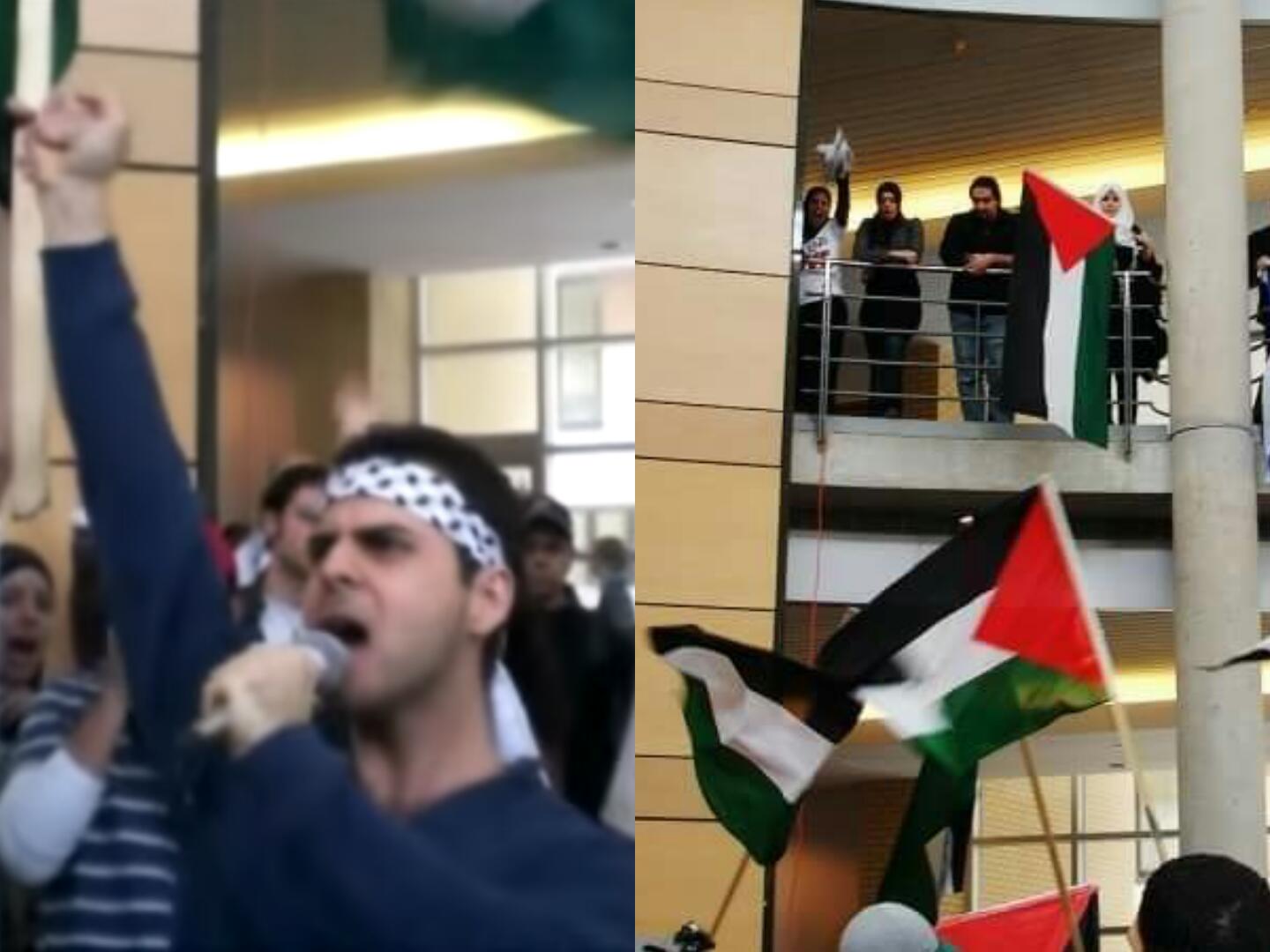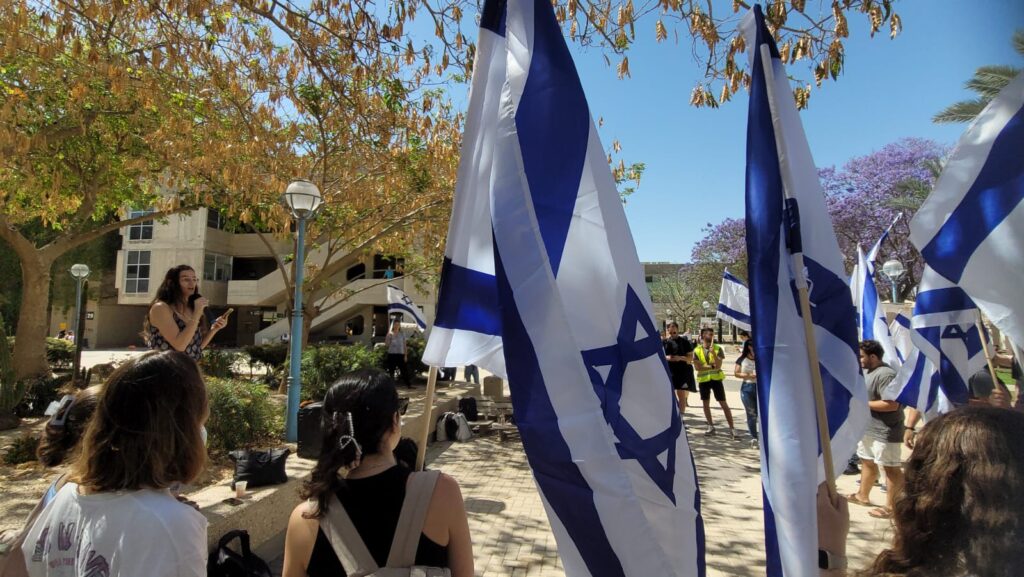
Three years ago, a large-scale, informal, and yet typical, Israeli-Palestinian debate took place on campus. This debate caused controversy, questioned the university’s commitment to free speech and student rights, challenged the university’s ability to make decisions regarding student safety, caused one of the university’s largest donors to pull out his fundings, and highlighted the student government’s and university’s inability to represent our diverse student body fairly.
This debate was picked up by major Canadian newspapers such as the Globe and Mail, National Post, CBC, and CTV, as well as international news sources such as Al Jazeera. All this controversy was fueled by a single painting. This painting was one of twenty murals created to represent themes of student life, diversity, activism, social rights, and “reclaiming the commons”. As a winning painting over five years ago in an art competition held by the student government, this mural was only meant to “be displayed [in the student center] for two years”.
This brings us to the controversy which still is present today.
Amongst the 20 chosen murals was a painting titled “Palestinian Roots,” featuring a young man who holds rocks behind his back, wearing a keffiyeh. The mural also features a tree being bulldozed. Said to be inspired by the “ongoing issues in Palestine,” the mural also features words such as ‘Peace’ and ‘Justice’ in various languages. But the most troubling part of the painting is the map of Israel embedded in the man’s scarf, because this map labels the entirety of the land as “Palestine.”

Erasing an Entire People
What’s troubling is that this painting demonstrates hate as it attempts to promote peace. It depicts violence and aggression towards a population that has a right to exist as much as the next. This aspect of the mural alone changes the message from one about social rights, activism, and unity, to one that targets an entire religion and nation.
Depicting the borders of Israel as the country of Palestine directly contradicts the message of the initial campaign; through its attempt to ‘reclaim the commons’ and ‘represent diversity,’ the painting displays blatantly anti-Semitic imagery that marginalizes Jewish and pro-Israel individuals who are part of the campus’ ‘student life’. The artist’s desire may have been to show active resistance, but the image, which appears passive on the surface, has a more aggressive meaning.
The visual embodiment of a young man waiting on the sidelines of a construction site (weapon in hand), combined with the image of the scarf shows that the true meaning of the painting is much more violent. But the biggest problem of the painting lies in the map on the scarf, which indicates that Palestine is all of Israel.
This is problematic because Israel is an established nation, a land and community that is not going anywhere. Additionally, Jews have always had a claim to the land of Israel – the land they call home. Jerusalem, Israel’s capital city, has been the center of this homeland for over 3000 years, reflecting the essential role that the city and the country play in Jewish identity. It’s established as such and thus can’t just be dismantled or erased from the history books and maps.
Rather than suggest a solution, or legitimate and non-threatening ‘peace’ and ‘justice’ images, the painting suggests that Palestine encompasses the entire land space, and thus ignores the right of Israel’s existence, erasing the Jewish people’s identity. Zionism, the self-determination movement of the Jewish people and the belief that they have a right to a homeland, was pioneered during the late 19th century, partially as a result of growing anti-Semitism towards Jewish individuals. Israel represents not just the promise of safety for the Jewish people, but also serves as the image of independence and hope during times of struggle.
Following the anti-Semitic terrorist attack on the Tree of Life Synagogue in Pittsburgh, Jewish people and Zionists alike are looking towards Israel and the maintenance of the country as an essential protection. Any act of terror, big or small, tends to foster unity and a more supportive community. We honored this tragic event with a vigil at the York University Hillel, and several members of the faculty, student body, and the YFS attended to show their support. So why can’t we get this same sort of support by removing one of the largest anti-Semitic displays that dominates this campus?
How are Jewish and Israeli students supposed to feel about and react to these mixed signals? How are students supposed to come to university everyday, when they have a constant, daily reminder of hatred above their heads? How can York University promote policy and an environment that celebrate diversity, activism, and social rights when the free speech of students who feel threatened is left unaddressed?

This mural is still hanging in the York University Student Center today, and it represents the discontent and unwelcoming environment that Jewish students face on campus. It perfectly represents why Zionists feel uncomfortable on the campus, and how anti-Zionism is tolerated, if not supported, by the student government and university staff. It stands for an anti-Semitic narrative, which erases not just a religion, but also a group of people, an entire nation, and that nation’s existence.
I believe in free speech, but this example of student activism represents violence against fellow students. I believe in the humanity of the student body, and I don’t believe that the university tries to be anti-Semitic towards it’s Jewish students. But this mural represents a hateful ideology – one that says Jews are not welcomed and neither are Zionists.
How can it by “my time” if my people and community are reminded daily that we are not welcomed? The Jewish state of Israel has been recognized for over 70 years, and if it really is “my time”, then it’s time the university recognized my homeland as well.
Contributed by President of York University’s CAMERA-supported group Israeli Students Association and CAMERA Fellow Shira Ragosin.

